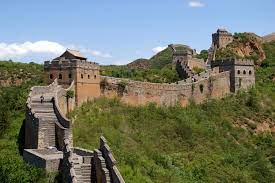THE WALLS OF SACSAYHUAMÁN, PERU
Scientists still have no clear answer as to who built the citadel of Sacsayhuamán in the Andes, when and why. The fortress stands close to the former capital of the Inca Empire, Cuzco, and the most common belief is that it was built to protect the city. Three zigzag walls built of many tonnes of stone blocks, one above the other, rise up the hillside with such precision that not even a piece of paper would fit through the gap between them. However, the mighty walls are completely exposed on the flanks, so some historians doubt that Sacsayhuamán was a defensive fortification.
THE WALLS OF GREAT ZIMBABWE
The remains of the stone walls of Great Zimbabwe tower over the African savannah, a rare sight in South Africa where dwellings were built in clay and straw. In the unusual city, each family’s dwelling place was protected by its own wall, and the main building was surrounded by several concentric fences at once. The outer elliptical wall, made of heavy granite blocks, is 100 metres in diameter and 5 metres thick.
All the structures of Great Zimbabwe are built without mortar and there are no straight lines or corners, and their shape is reminiscent of the wooden fences of African villages. The city flourished in the Middle Ages as gold, copper and iron were mined and worked, irrigation channels were dug and wells carved in the rocks. But from the mid-15th century the decline of Great Zimbabwe began, the reason for which historians are still only guessing.

HADRIAN`S WALL, GREAT BRITAIN
This ancient defensive fortification stretched across northern England, from the Irish Sea to the North Sea. The wall was built on the orders of Emperor Hadrian to defend the Roman provinces in Britain against the raids of the unruly Picts and Brigantes, who lived in what is now Scotland and northern England.
For seven years, three Roman legions and hundreds of diggers and stonemasons worked to build walls of stone and peat. The result was a three metre wide rampart with towers and signal towers at the narrowest point of the island. A deep moat was dug along the north side of the wall and a military road was built on the south side.

